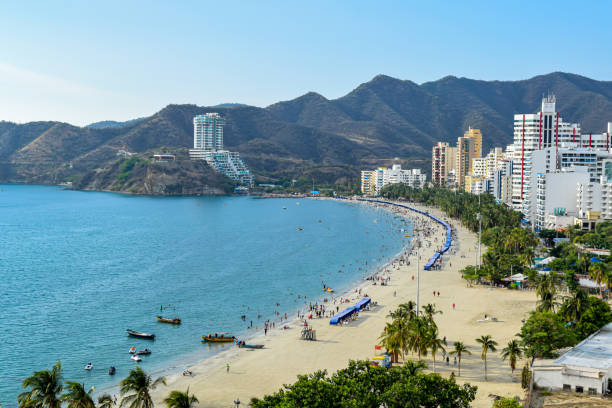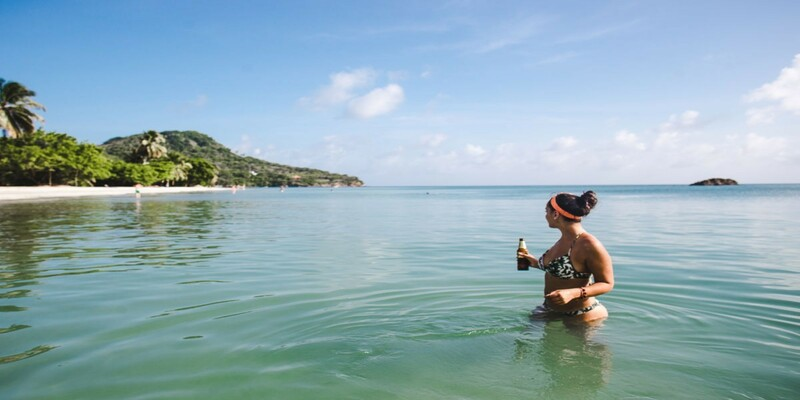Everything You Need To Know To Plan Your Trip To Colombia
Oct 03, 2023 By Sean William
Advertisement
It's easy to see why it's been ranked so highly as one of South America's top tourist spots by many organizations. It's a nation that has everything from breathtaking landscapes to verdant rainforests, stunning beaches, delectable cuisine, and historic sites. Choosing just one location trip to Colombia is practically hard since there are so many beautiful places to visit (Cartagena, Bogata, Medellin, Salento, Tayrona, etc.). It would be best if you took as much time as possible to discover this intriguing South American nation.
Visa And Entry Requirements For Colombia
Every guide to Colombia should begin with entry requirements and procedures. There are 98 nations whose citizens may visit Colombia without a visa. These regions and countries include the United Kingdom, all E.U. citizens, South and Central America, Australia, New Zealand, as well as Indonesia. You will get a 90-day visa-free stamp throughout your passport upon arrival. To enter Colombia, visitors must provide documentation of their departure. This policy is rarely strictly enforced on the ground, but most airlines will only allow you to board an aircraft if you provide onward travel documentation. So, you'll need to show that you left Colombia via land, air, or sea. If you haven't done so, you can make a bogus plane ticket online for around $5 U.S. I've tried it a few times, and it's consistently successful.
How Money And Currency Work In Colombia
Getting Colombian currency should be your first order of business before visiting the country. The currency of Colombia is the Colombian Peso (or COP for short). In most cases, people would instead use this money than the U.S. dollar (unlike many other South American countries). As of this writing, the exchange rate for one U.S. dollar is four Colombian pesos (April 2020). However, it may move widely. In Bogotá and Medellin, for example, EFTPOS (or debit/credit card) is accepted exclusively at the largest supermarkets, hostels, and hotels. A fee of 3-5% is typically imposed on EFTPOS transactions.
Withdrawing cash from ATMs is convenient in many locations around Colombia, so it's wise to have some cash on hand at all times. Use a BBVA ATM to withdraw money for free. These are the only ATMs that will accept your foreign card without charging you an arm and a leg. The maximum amount that may be withdrawn is restricted to $300,000.
Climate In Colombia

The lack of distinct seasons in Colombia results from the country's northern position in South America. The seasonal fluctuations in average temperatures in Colombia are relatively minor. Instead, they vary across Colombia owing to differences in altitude. The weather is more affected by elevation than by the actual passage of time. Because it always seems like Springtime in Medellin, the city has earned the nickname "the city of everlasting Spring." As a tropical region, Colombia's Caribbean coast has scorching temperatures and frequent rainy seasons. Learn more about the typical climate and weather of Colombia by clicking here!
When Should You Visit Colombia?
Rain is the essential factor in determining when to go to Colombia. Most precipitation occurs in the summer (June–August) and the least during the winter (December–February) (December, January, February.)
Spring
The wetter months of the year start in March and continue through May. In May, Colombia has an average of 17 rainy days every month.
Summer
Months of June, July, and August - When visiting Colombia in the summer, bring an umbrella and raincoat just in case.
Autumn
(Sep. - Okt. - Nov.) It stops raining in the middle of fall and stays dry until December.
Winter
(Winter months) (December, January, February) Finally, it's winter. Some people argue that the ideal time to visit Colombia is during the winter since it is the driest season.
The climate of Colombia makes it an excellent tourist destination year-round. Even though I went in the middle of the summer (August/September), I still had a fantastic experience and many gorgeous days! The only other time of year to remember while visiting Colombia is that it is at its busiest during the holiday season (December and January.) If you intend to visit Tayrona National Park, you should know that it is closed for February.
Safety And Risks In Colombia
Even though major cities in Colombia are specific, typical issues like pickpocketing are something to be aware of. Robberies (often at night), money exchange schemes, and police corruption are other prevalent problems. Note that although possession of minor quantities of narcotics is technically decriminalized in Colombia, this does not extend to foreigners, and "on-the-spot fines" are often issued. In addition, you must always have your passport or a replica of it on you when in Colombia. While there, I saw many people being issued "on the spot penalties" for failing to bring theirs. Instead of being led to immigration, this fee was imposed.
Cost Of Living In Colombia
Budgeting and having a ballpark figure in mind for how much the trip will cost is crucial. That's why I've listed the typical prices of several often purchased items in my travel guide to Colombia.
Accommodation Costs In Colombia

Hostel dorms cost between 20,000 and 40,000 COP per night. Starting at 60,000 COP, private rooms are on the very minimum end of the spectrum and are often only found in smaller towns. Expect to spend roughly 100,000 COP for an excellent private room with a private toilet; of course, more upscale hotels may cost upwards of USD 100 per night.
Conclusion
During our time in South America, Colombia was a high point. Although socially conservative, the country boasts more of Latin America's most progressive LGBTQ+ policies. We spent most of our time in Cartagena, although Bogota has a far more vibrant homosexual community. During our trip, we felt safe being a lesbian couple out in the open. Since our marriage is recognized by Colombian law, we needed to present a single customs card when entering the country.
Advertisement

Christin Shatzman Dec 04, 2024
Experience 7 Incredible Things to Do in Tofo, Mozambique: Your Perfect Adventure
81181

Sean William Oct 27, 2023
Jaipur's Captivating Charm: Must-See Places and Travel Tips
63174

Juliana Daniel Feb 14, 2024
Travel Guide To Cape May, New Jersey
810

Sean William Feb 15, 2024
What is Dunwich famous for?
30551

Tessa Rodriguez Nov 14, 2024
A Visitor’s Guide to Proyecto Horizonte in Bolivia
66013

Gabrielle Bennett Dec 08, 2024
The Road Ahead: 9 Must-Know Tips for a US Cross-Country Trip
4005

Juliana Daniel Nov 02, 2023
Best Dune Bashing Tours in Australia: Unleash Your Adventurous Spirit
9069

Juliana Daniel Nov 15, 2023
Best Private Tours in Kasol that You Must Take
29169